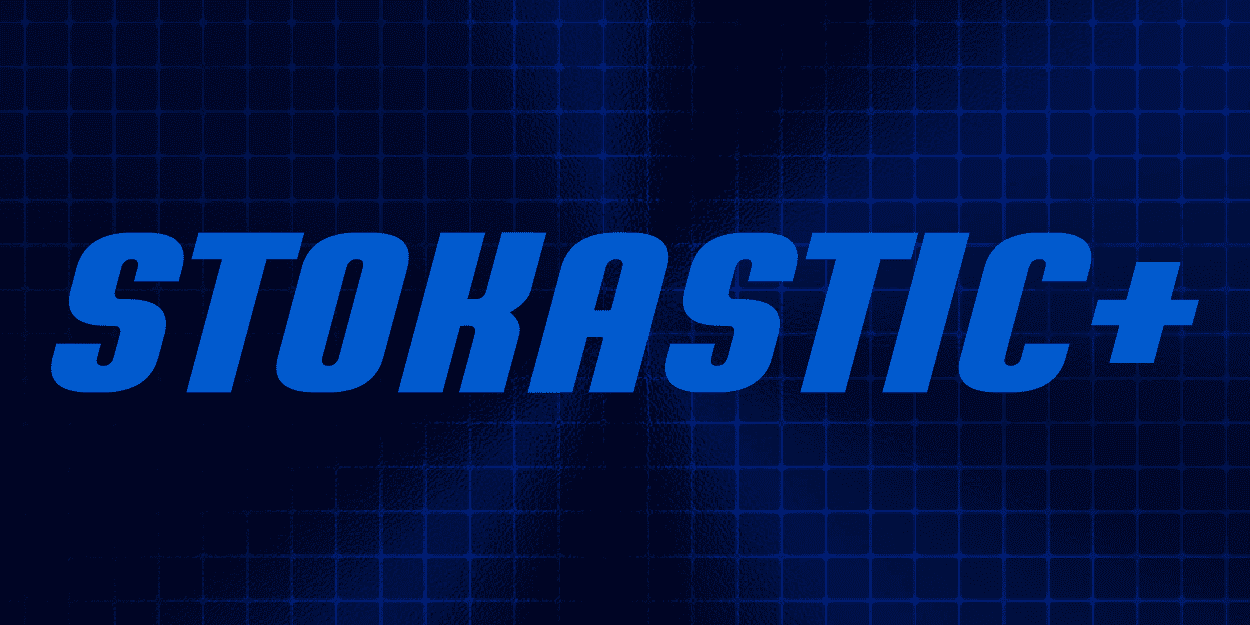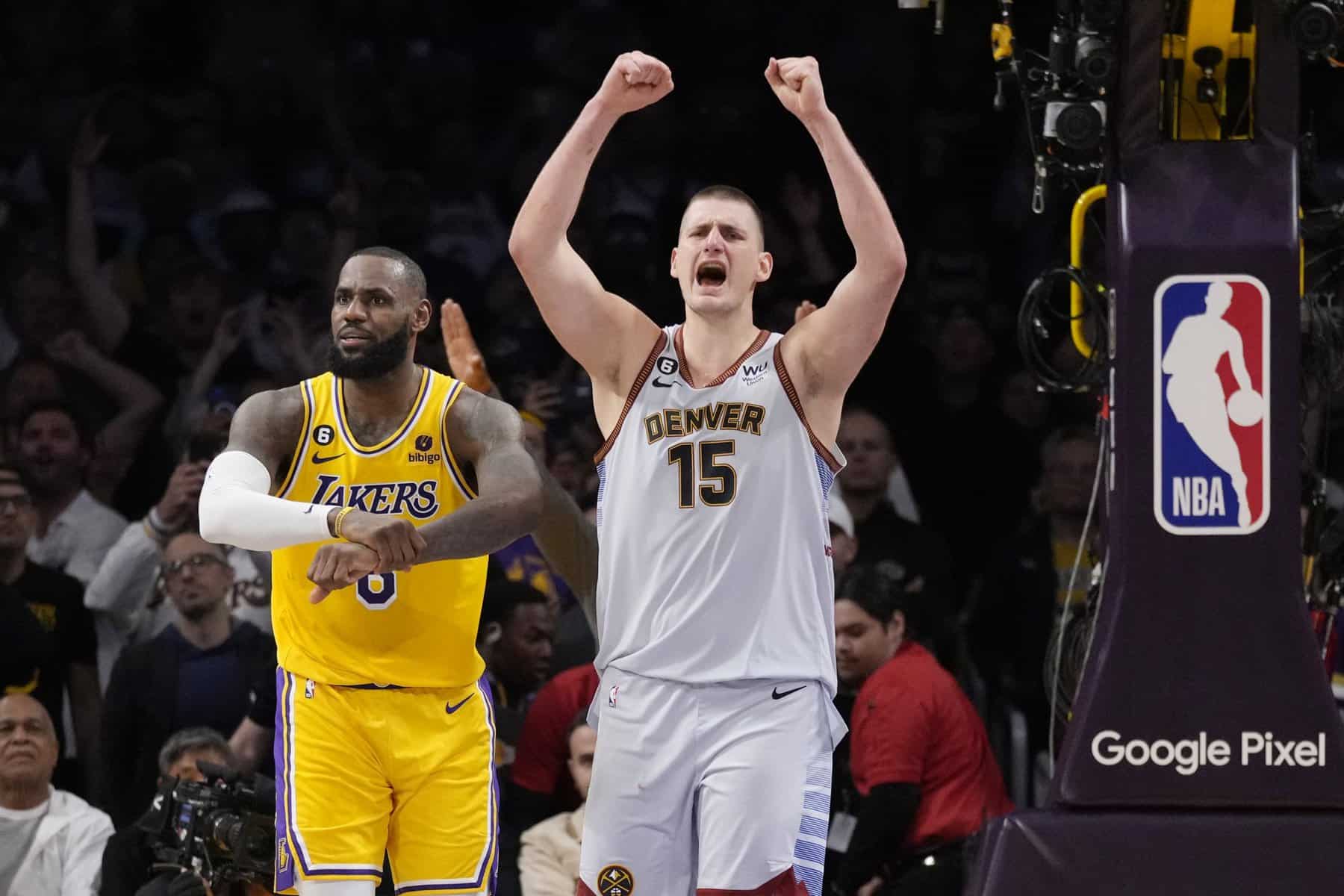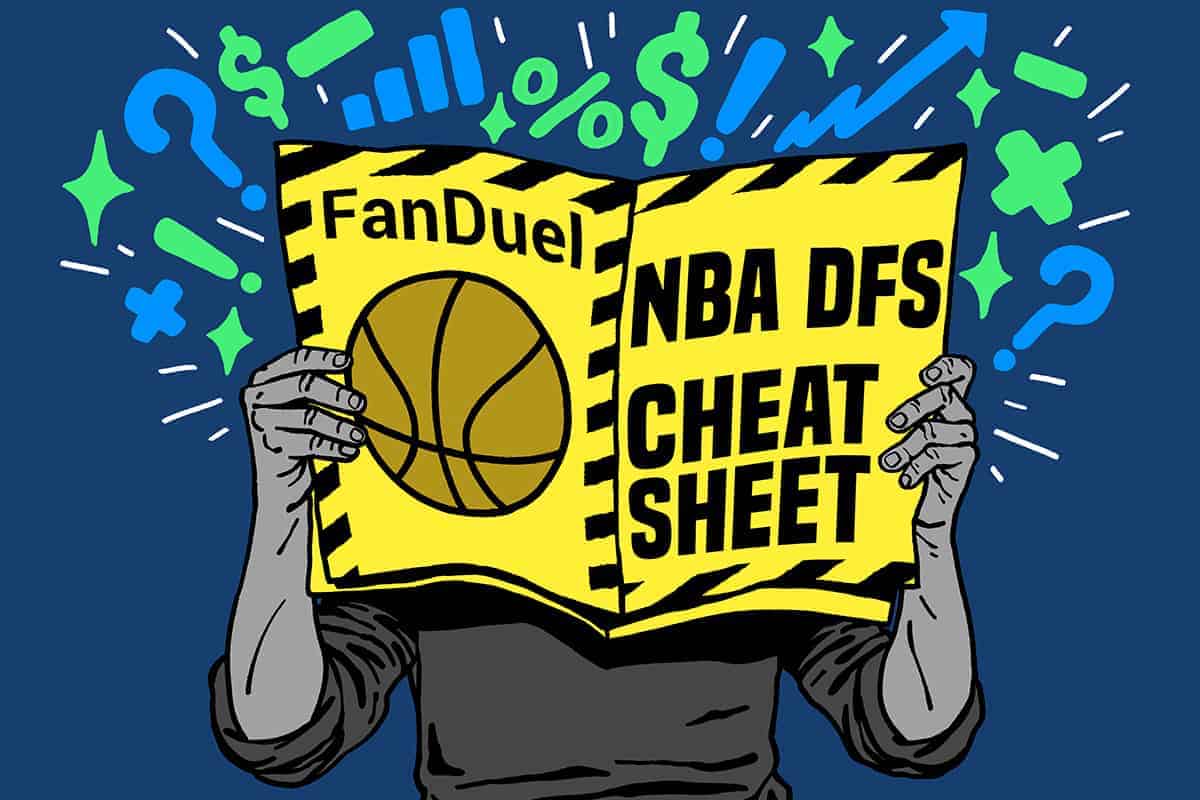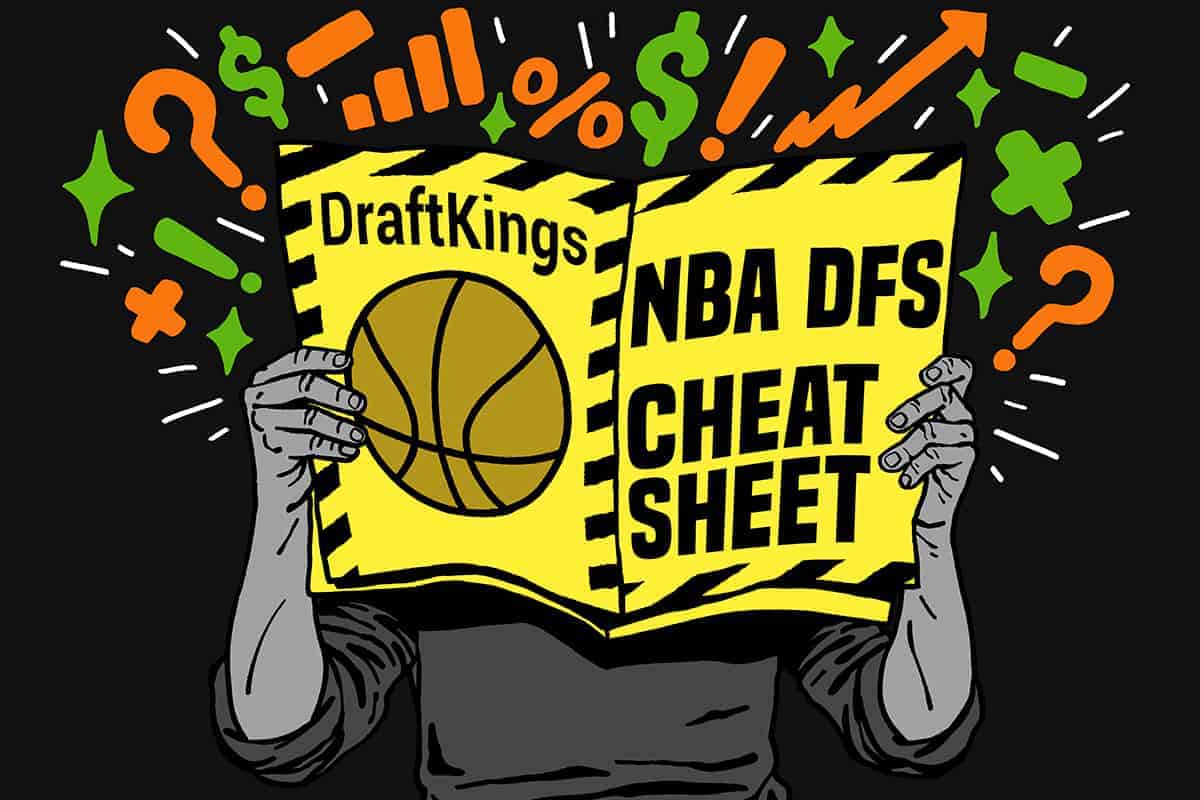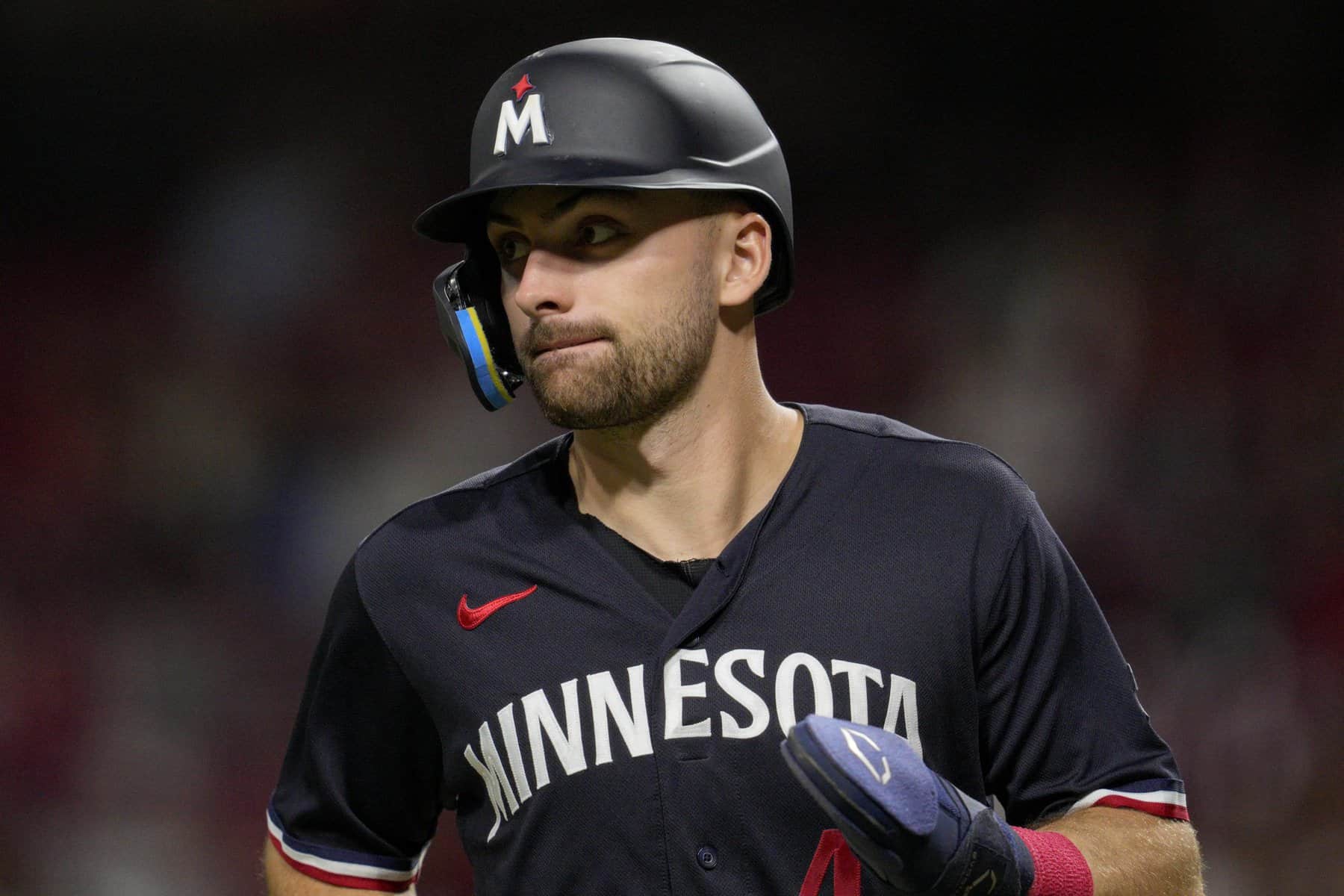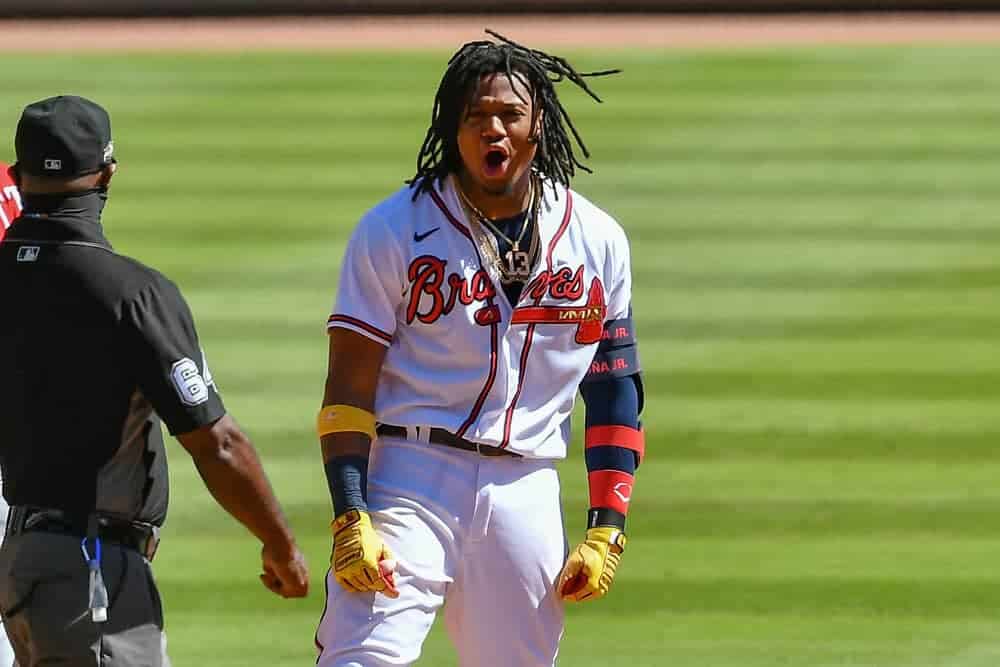For nearly a year now, I’ve been hosting the High Stakes podcast for Stokastic, interviewing DFS pros on a range of topics. There have been a lot of recurring themes on the show, but the most relevant for this article: DFS pros love NFL DFS Showdown.
That’s because a lot of casual NFL fans enter the Showdown fray to have some action on island games. As a result, DraftKings and FanDuel offer enormous contests with generous prize pools. The contests become more difficult to win, too, when there are hundreds of thousands of entrants, but with a large portion of the new players being casual, the increase in difficulty pales in comparison to the increase in prize pools. It’s a tradeoff DFS pros will gladly make.
My goal with these Showdown articles — which I’ll be writing for each Thursday Night Football and Monday Night Football NFL DFS slate this season — is to help you attack the largest-field DraftKings GPP like a pro. There are three main components to discuss when it comes to Showdown, and I’ll break them down accordingly: Projection, Correlation and Differentiation.
Before reading this piece, you may find it helpful to read my evergreen piece about how to attack NFL Showdown GPPs more generally: https://www.stokastic.com/nfl/draftkings-showdown-simplified-tips-tricks-making-big-money-nfl-dfs-island-games-2022/
Week 12 NFL DFS Showdown: Buccaneers-Saints MNF
Projection
The goal in DFS is to make the lineup that puts up the most points so a natural starting point is looking at individual players who are likely to put up high scores or high point-per-dollar scores. Some pros run simulations or create their own projections to achieve this. Many others, like myself, rely on the Stokastic projections and tools to determine which players should be core pieces of our lineups. I primarily look at the base projections and the “Top NFL DFS Showdown Plays” Tool, which publishes results of 10,000 advanced simulations run by the Stokastic team.
Studs
These are simply the top projected players on the slate. I’d recommend having at least three of these players in just about every lineup you make tonight, either as captain or in a flex spot.
- Tom Brady ($10,400) is the highest projected player on the slate, facing a Saints defense ranked 12th in the league in Pass DVOA, per Football Outsiders.
- Chris Godwin ($10,600) is the second highest projected player on the slate.
- Alvin Kamara ($10,000) leads a tier of four players who all project within 1.5 fantasy points of each other, facing a Buccaneers defense that is 12th in the league in Rush DVOA.
- Mike Evans ($9,600) is the fourth highest projected player on the slate.
- Andy Dalton ($9,000) is the fifth highest projected player on the slate, facing a Buccaneers defense that is sixth in the league in Pass DVOA.
- Chris Olave ($8,400) rounds out this tier of studs.
- Rachaad White ($7,000) leads the bottom tier of studs. He goes against a Saints defense ranked 20th in the league in Rush DVOA.
- Leonard Fournette ($7,400) joins his backfield mate in the bottom tier of studs. It is unclear what Fournette’s role will be in his return from injury, following a couple nice games from White.
Top Point-Per-Dollar Plays
These are just a few players who will be featured throughout my lineups due to their high points-per-dollar projection. At the same time, because I’ll typically have at least three studs in each lineup, the top points-per-dollar plays are often players I’ll be pivoting away from in some lineups in favor of players who project a bit worse, but who will also garner lower ownership. I’m also excluding any player with a projection below three fantasy points from this list.
- Adam Trautman ($1,200) is too cheap for his role as the top tight end for the Saints with Juwan Johnson out.
- Rashid Shaheed ($1,400) made his NFL debut in week six and has quickly earned a role in the offense, playing 49% and 53% of offensive snaps in the past two Saints games. The undrafted speedster has already made a handful of big plays in his short career.
- Cade Otton ($1,800) and Cameron Brate ($3,000) are both solid value options, splitting tight end snaps for the Bucs.
- Jarvis Landry ($5,200) has played at least 56% of offensive snaps in each of the last three games.
- As usual, all four kickers and defenses are playable as nice value option. Ryan Succop ($4,000) leads the group in both projection and value. Brady has thrown just two interceptions this year after throwing 12 in each of the past two seasons. Dalton has thrown seven interceptions in nine games started. Neither quarterback is sacked at a high rate.
Correlation
In NFL DFS, correlations are endless, both positive and negative. Most are minor enough that they don’t necessarily need to be factored into lineups. If you want to give a boost to your running back’s defense, for example, that’s great; but running backs will frequently be optimal without the defense also being optimal, even in NFL DFS Showdown.
The only correlations that are almost mandatory to consider on NFL DFS Showdown slates involve quarterbacks. Particularly, non-rushing quarterbacks. That’s because of the scoring dynamics on DraftKings. On each passing play, the pass catcher scores more fantasy points than the quarterback. For example, if a quarterback throws a pass for 5 yards, he’ll get 0.2 fantasy points — 1 fantasy point per 25 yards passing, divided by five. The receiver will get 1.5 fantasy points — 1 point per reception, plus half a point for 5 yards receiving. The quarterback also only gets 4 points per passing touchdown, while the receiver gets 6 points for a receiving touchdown.
The quarterback is also generally one of the most expensive players on his team. Thus, often he will need to be his team’s highest fantasy point scorer to be the optimal captain. Outside of rare occasions where the quarterback scores fantasy points by passing to a player who is not in the DraftKings player pool or gets points as a receiver on a trick play, there are essentially just two ways for the quarterback to be the highest-scoring player on his team: adding fantasy points via rushing or spreading the ball around to multiple pass catchers.
Some General Thoughts
- If you play a quarterback at captain, and he does not have rushing upside, and he is the most expensive player on his team, you will almost always want to have multiple of his team’s pass catchers in the flex. This is also largely true if the quarterback is only slightly less expensive than the most expensive pass catcher on his team.
- If you play a quarterback at captain, and he has moderate rushing upside, you can consider playing just one of his pass catchers in the flex — but multiple may still be preferred, depending on the extent of that rushing upside. The quarterback’s price may also come into play here; the more expensive he is, the more likely you’ll need to have multiple pass catchers in the flex.
- If you play a quarterback at captain, and he has major rushing upside, you don’t necessarily need to play any pass catchers in the flex. This is relatively uncommon, and only applies to a few quarterbacks.
- If you play a quarterback in the flex, and he does not have rushing upside, you will generally want to have at least one of his pass catchers elsewhere in the lineup, either at captain or in another flex spot.
- If you play a quarterback in the flex, and he has moderate to high rushing upside, you don’t necessarily need to include one of his pass catchers elsewhere in the lineup. But there will always be positive correlation there between a quarterback and his pass catchers.
Some Saints-Buccaneers Game-Specific Thoughts
- If you play Brady: Brady has very limited rushing upside and should always be paired with at least one pass catcher. Preferably multiple pass catchers if Brady is in the captain spot. Both White and Fournette can be included as pass catchers to pair with Brady.
- If you play Dalton: Dalton has very limited rushing upside and should always be paired with at least one pass catcher. Preferably multiple pass catchers if Dalton is in the captain spot. Kamara can be included as a pass catcher to pair with Dalton.
Differentiation
Making highly projected lineups with smart correlations will separate you from the lowest level Showdown players, but there are many very smart casual players as well. Differentiation is the last step to separating pros from Joes.
In just about any DFS GPP, finding low-owned gems is key because lower ownership reduces the field of lineups you’re competing against when the player has a 99th-percentile outcome. Taking it to the extreme, just as a thought exercise, let’s say that Kamara scores 100 fantasy points tonight. You’re not just going to need him; you’ll need him in the captain spot (150 fantasy points). If 20,000 lineups in your contest have Kamara in the captain spot, you’ve essentially reduced the field of lineups you’re competing with to 20,000. If only 200 lineups have Kamara at captain? Now we’re talking.
On NFL DFS Showdown slates there is an additional factor for large-field GPPs. We don’t just want to find seldomly used players; we want to find seldomly used LINEUPS. Why? Well, I’ll give you two examples from last year:
- On Sept. 20, 2021, DraftKings had a Milly Maker for the Packers vs. Lions tilt, but the top lineup was duplicated 231 times. Rather than winning a million dollars, the users who entered those 231 lineups had to split the top 231 prizes, for just a bit over $6,000 each. That’s despite having everything go their way, which requires an extreme amount of luck.
- On Oct. 11, 2021, we saw the other end of the spectrum: user rcoho1984 played a unique lineup in the Ravens vs. Colts Milly Maker, taking home not just a million dollars but a ticket to the Tournament of Champions.
If you’re going to win — which takes a lot of luck, regardless of how well your lineup projects — I’d suggest making it count. I’m not necessarily concerned with making an entirely unique lineup like rcoho1984 did every single time, but I aim to be a lot closer to their unique lineup than those that were duplicated 231 times.
Latest NFL DFS Content
- Want to Learn How to Win a DraftKings Milly Maker With Stokastic Sims? Steve Buzzard Will Tell You How
- PrizePicks, Sleeper & Underdog Cheat Sheet: Best More/Less Picks Today for NFL (February 11)
- DraftKings NFL Cheat Sheet: Super Bowl Sims Picks | George Kittle
- NFL Super Bowl 58 DFS Picks: 49ers vs. Chiefs (February 11)
- NFL DFS Captain Picks for Super Bowl 58: Rashee Rice, George Kittle & More
- Stokastic DFS on Youtube
Some Easy Tricks
Low-owned players. Yup, even if you’re using other tricks to get unique, it’s still a good idea to play a few players in some of your lineups who won’t be getting much ownership. Some low-owned players to consider:
- Kevin White ($200) played 32% of snaps in the most recent game and could pay off his salary with one splash play.
- Mark Ingram ($4,400) is clearly too expensive for his role in the Saints offense. A single short touchdown likely won’t be enough to pay off his salary, but in a game with a low total, it might not take much more than a touchdown. Ingram could get there in his usual role, and would be the immediate beneficiary if Kamara suffers an in-game injury or if the Saints need to burn some clock with a big lead in the second half.
- Tre’Quan Smith ($2,600) has seen his role diminished in the Saints offense, playing just 32 total snaps over the past three games after seeing at least 36 snaps each in all but one of the games he had played earlier in the year. Smith has already scored more than ten DraftKings points three times this season, though, and while he is less likely to do it if his snaps remain limited, he is capable of big plays and the Saints’ wide receiver situation is volatile enough that a jump in snap share would not be a big surprise.
Embrace lineups missing some correlation pieces or even with some negative correlation. Generally, highly correlated lineups will be over-owned, whereas the field will avoid negative correlation at all costs. If you want to read my reasoning, check out the evergreen piece I linked near the top of this page. In some of my lineups, I like to see the following:
- Quarterback against opposing Defense.
- Pass Catcher at Captain without including the QB at Flex.
- Multiple Running Backs from the same team in a lineup.
Leave salary on the table. This is the easiest way to lower your duplicates. Casual players assume that if they have salary left over, they should upgrade. The problem with this approach is that it almost inevitably leads to highly duplicated lineups. How much salary should you leave on the table? That’s up to you. If it’s less than $600 and you haven’t gotten extremely unique with player selections and weird correlations, it’s likely you’ll have to split any winnings with many other entries.
Thanks for reading to the end of this article! If you appreciate this free content and want to see more of it every day, you can help us out by sharing this article on social media!

